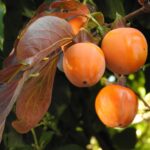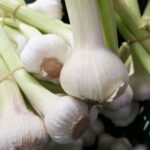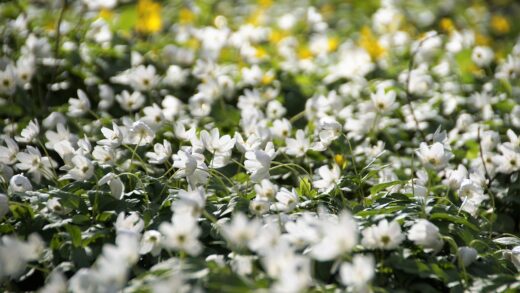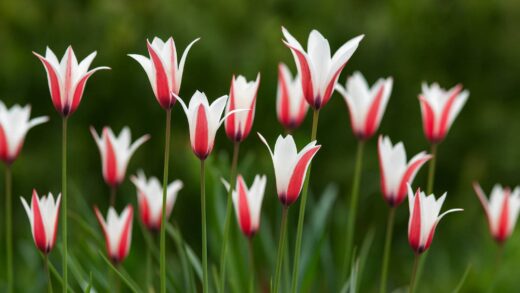Celery, whether it’s celeriac, stalk, or leaf celery, is a truly versatile and rewarding plant in the kitchen garden, and its season can be significantly extended with proper overwintering techniques. Careful preparation and selecting the right storage method are crucial for enjoying the fresh, crisp taste and nutritional value of celery during the winter months. Successful overwintering is not just about preserving the harvest but also about respecting the plant’s biological cycle, which helps prevent frost damage, rot, and other storage diseases. Proper timing and diligent work will bear fruit, ensuring you don’t have to give up on homegrown vegetables when the cold weather arrives.
Selecting the right plants for overwintering is the first and one of the most important steps in the process, laying the foundation for future success. Only choose healthy, undamaged celeriac roots or celery plants that are free from pests and diseases for this purpose. For celeriac, look for hard, dense, crack-free specimens that have reached an appropriate size but have not yet become woody. For stalk celery, prefer strong plants with thick, fleshy, bright green stalks, avoiding any with yellowing or withered leaves. A thorough visual inspection helps to filter out plants that could cause problems during storage.
Determining the optimal harvest time is also a critical factor that significantly influences the storability of celery. The flavor of celeriac often becomes sweeter and more concentrated after a light, early autumn frost, but a hard, prolonged freeze can damage the root’s cell structure, leading to rapid deterioration in storage. Ideally, in climates like Hungary’s, harvesting should be timed for late October or early November, before the ground freezes solid. Always monitor the weather forecast to choose the most suitable window for lifting the plants.
Immediate post-harvest preparation is essential for long-term, loss-free storage. Carefully lift celeriac from the ground using a garden fork, taking care not to damage the root. Then, remove excess soil by hand or with a soft brush, but never wash the roots, as moisture promotes rot. Trim the leaves with a twisting motion or a sharp knife, leaving about a two-centimeter stub of the leaf stalks on top of the root, and also shorten the roots, but do not cut them completely from the bottom. This careful preparation prevents the roots from drying out and minimizes entry points for infection.
Overwintering methods in cellars and other storage spaces
Creating the ideal storage environment is the alpha and omega of successful overwintering in a cellar, ensuring that the celery remains fresh for months. The perfect space is cool, dark, and most importantly, has high humidity, while also ensuring adequate air circulation to prevent fungal diseases. A classic root cellar with a dirt or brick floor is best suited for this purpose, where the temperature remains stable between 0-4 degrees Celsius and the relative humidity is around 90-95%. If you do not have a cellar, a cool garage, unheated pantry, or even a storage clamp can be a suitable alternative if you artificially supplement the humidity.
More articles on this topic
One of the most common and reliable methods for storing celeriac is to bury it in damp sand or peat moss. For this method, you will need a deep wooden crate, bucket, or other container, the bottom of which is covered with a few centimeters of slightly damp sand or peat moss. Place the prepared celeriac roots in the crate, ensuring they do not touch each other, and then cover them completely, layer by layer, with the damp medium. This technique provides excellent insulation against temperature fluctuations, prevents the roots from drying out, and helps maintain their hard, crisp texture until spring.
Overwintering stalk celery requires a bit more attention, but with the right technique, it can be kept fresh for weeks, or even months. The best method is to “replant” the plants in a deep box or bucket filled with a mixture of soil and sand. Place the whole celery plants, dug up with their roots intact, tightly next to each other in the box, and then cover the roots thoroughly with the soil mixture. During storage, keep the soil slightly moist, but avoid overwatering, which can lead to the stalks rotting. This method mimics the plant’s natural life processes, keeping the stalks fresh and juicy.
Besides traditional methods, there are other indoor solutions suitable for storing smaller quantities. Carefully cleaned and prepared celeriac roots can be stored for several weeks in the refrigerator’s crisper drawer, individually wrapped in perforated plastic bags. Whichever method you choose, regular inspection is essential for success. Check the stored celery every one to two weeks and immediately remove any pieces that show the slightest sign of spoilage or mold to protect the remaining healthy produce.
Overwintering celery outdoors
Overwintering outdoors, or leaving the plants in place, is a convenient and nature-friendly solution, but it is not successfully applicable in all climates and gardens. This method works primarily in regions with milder winters, where the soil does not freeze deeply and for long periods, and the temperature rarely drops below minus 5-10 degrees Celsius for an extended time. Another key condition for success is well-draining, loose-structured soil, which prevents winter precipitation from accumulating and causing root rot. Celeriac tolerates this method better than the more frost-sensitive stalk celery.
More articles on this topic
Preparing the plants for outdoor wintering must begin before the first serious frosts set in. The most important task is to thoroughly cover the base of the plants with mulch, which forms a natural insulating layer against the frost. You can use a thick layer of at least 15-20 centimeters of straw, dry leaves, wood chips, or even mature compost for this purpose. The mulch layer not only protects the roots from the cold but also helps to retain soil moisture and prevent weed growth. For celeriac, it is advisable to remove the leaves before mulching to prevent rot.
For enhanced protection, especially in regions with more unpredictable winters, it is worth using simple protective structures in addition to a thick layer of mulch. Setting up a low plastic tunnel or a cold frame over the celery bed can significantly increase the security of overwintering. These structures create an additional air layer that provides extra insulation and protects the mulch from winter precipitation, keeping it dry and preserving its insulating properties. Such a protective cover also makes winter harvesting easier, as the soil underneath freezes less.
Harvesting from the winter garden is a special experience that provides you with fresh vegetables during the cold months. When harvesting, carefully pull back the mulch layer from the specific plant, taking care not to disturb the covering of the adjacent plants. Use a garden fork to lift the desired root, and immediately after harvesting, put the mulch back in place to ensure the continued protection of the other plants. With this method, you can essentially harvest “on demand,” ensuring a continuous supply of fresh celery until early spring when the new season begins.
Problems during storage and their prevention
Even with the most careful storage, problems can arise, among which fungal diseases are the most common and dangerous for celery. Two main pathogens threaten stored roots: white mold (Sclerotinia sclerotiorum) and gray mold (Botrytis cinerea), which can thrive in conditions of high humidity and poor ventilation. The infection initially appears as soft, watery spots on the root, on which a dense white or grayish-brown mold later develops. These diseases spread extremely quickly, so the greatest emphasis must be placed on their prevention.
The prevention of rot processes begins in the garden during the growing season and continues during harvesting. Avoid excessive nitrogen fertilization, as it results in a loose, water-filled tissue structure that makes the plant more susceptible to diseases. Handle the roots with extreme care during harvesting to avoid mechanical injuries and cuts that create entry points for pathogens. Only store completely intact, healthy celery for the winter, and allow for a short “curing” period before storage for surface wounds to dry out.
Although the presence of pests in storage is less common than diseases, it is possible for rodents, such as mice or voles, or slugs to find their way to the celery crates. Prevention is the most effective approach here as well: make the storage area rodent-proof, seal any gaps or holes, and use proper doors. During regular inspections, pay attention not only to diseases but also to signs of gnawing or other evidence of pests. A physical barrier of lime powder or sawdust spread around the crates can be effective against slugs.
Improper adjustment of the storage environment can lead to two fundamental problems: shriveling of the celery roots or their premature sprouting. Shriveling occurs when the storage humidity is too low, causing the root to lose a significant amount of water and become soft. This can be counteracted by slightly moistening the sand or peat medium. Sprouting, the growth of new leaves, is a sign of too high a storage temperature. To maintain the celery’s dormant state, it is essential to maintain a stable temperature below 4 degrees Celsius, which prevents the initiation of growth processes.




















